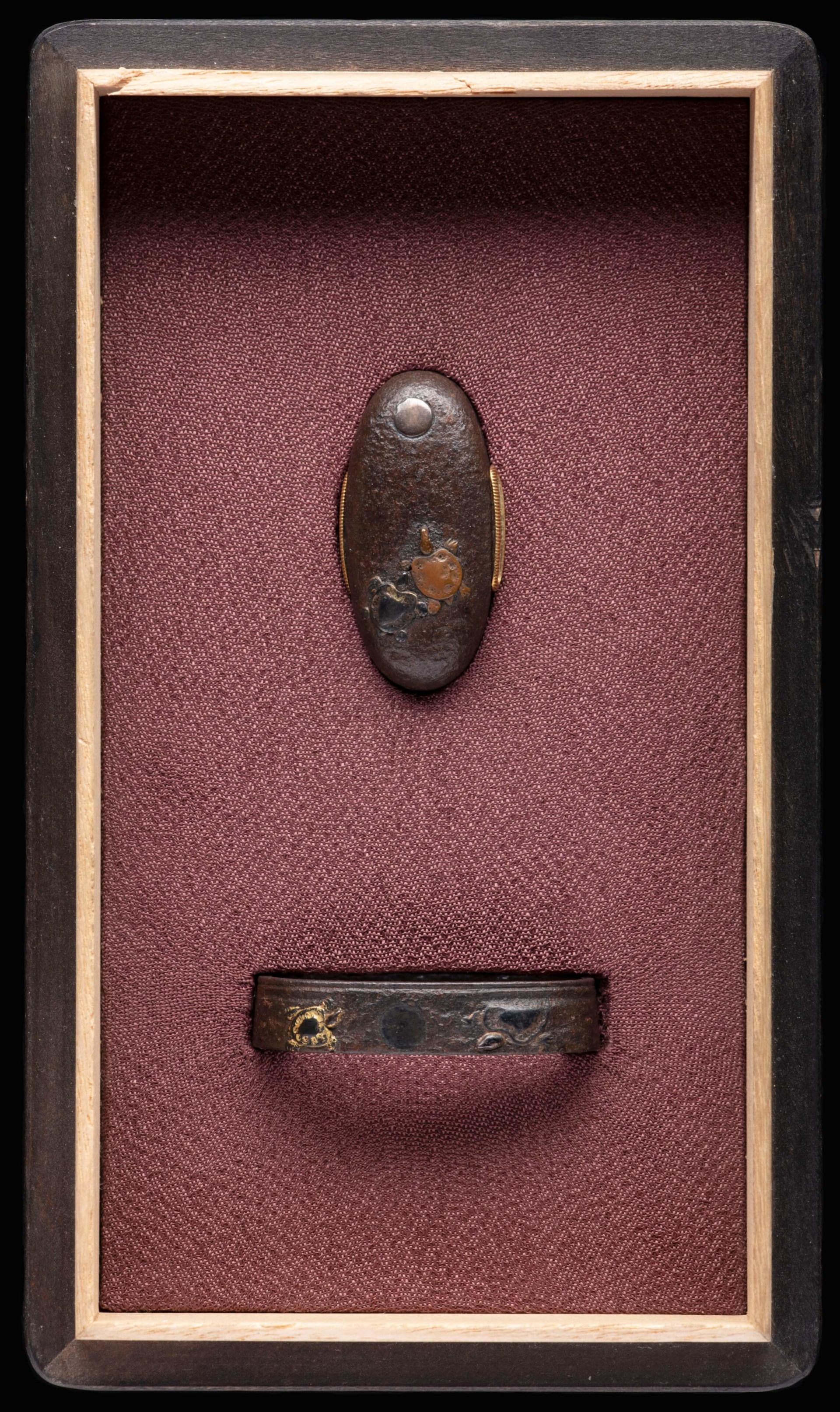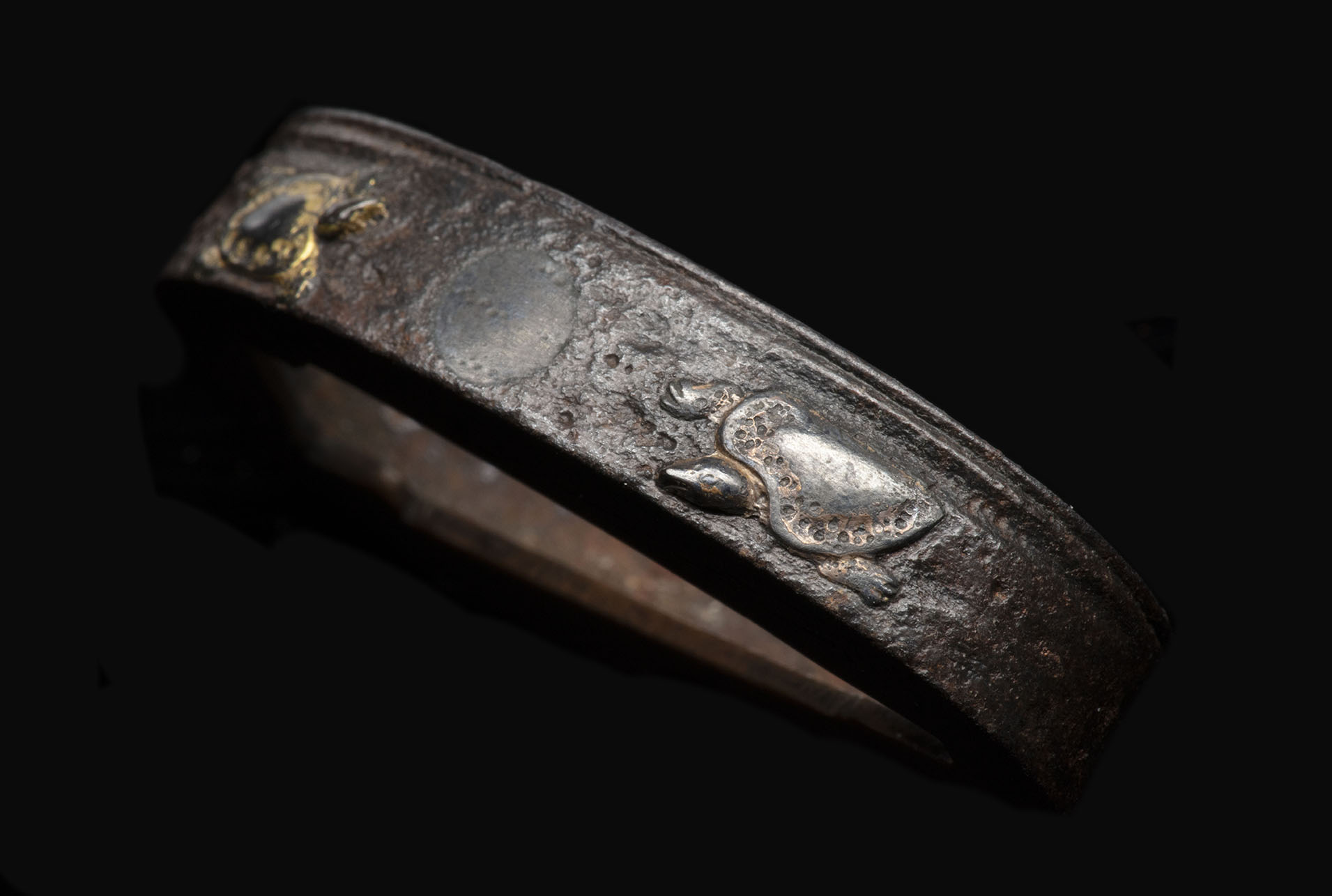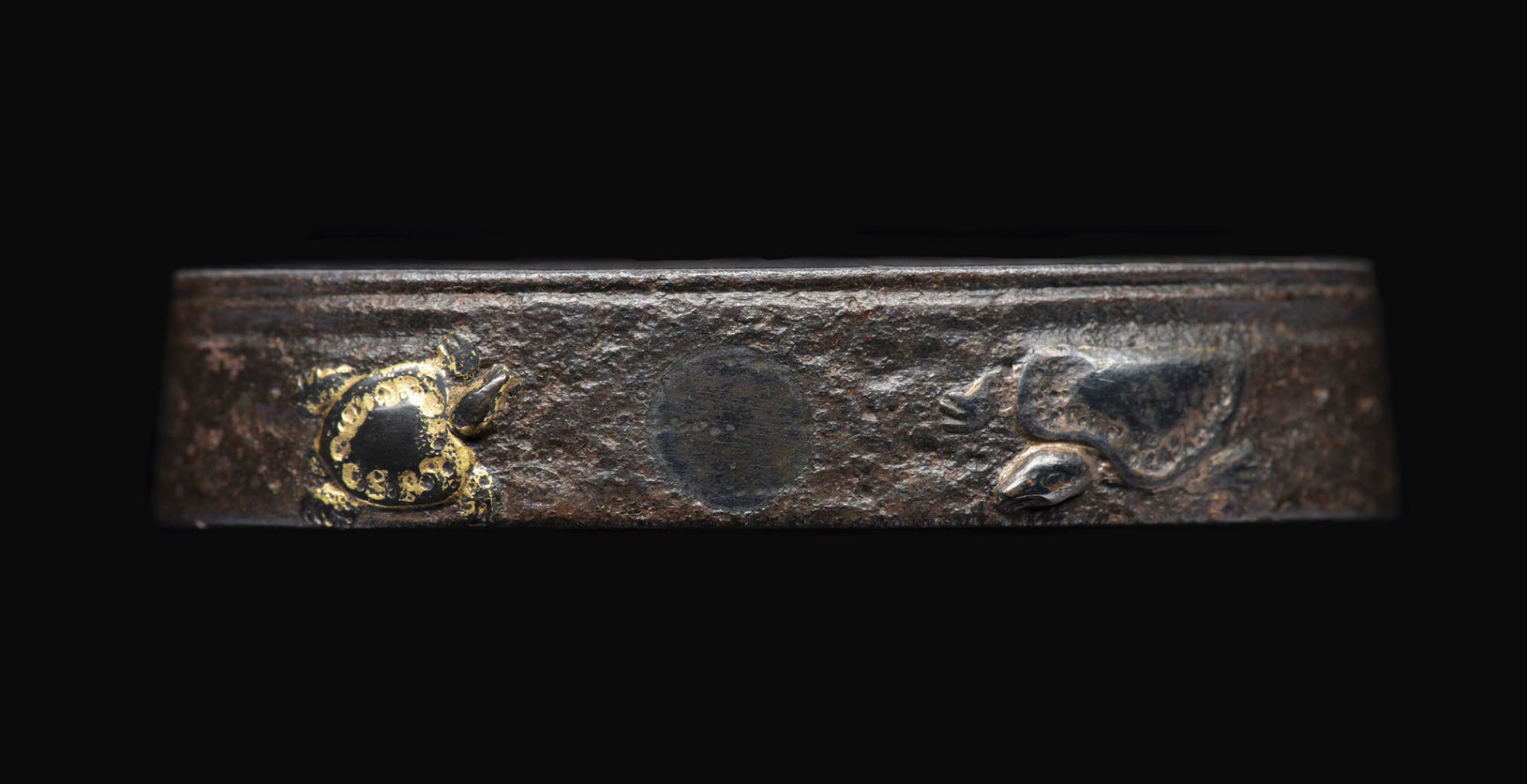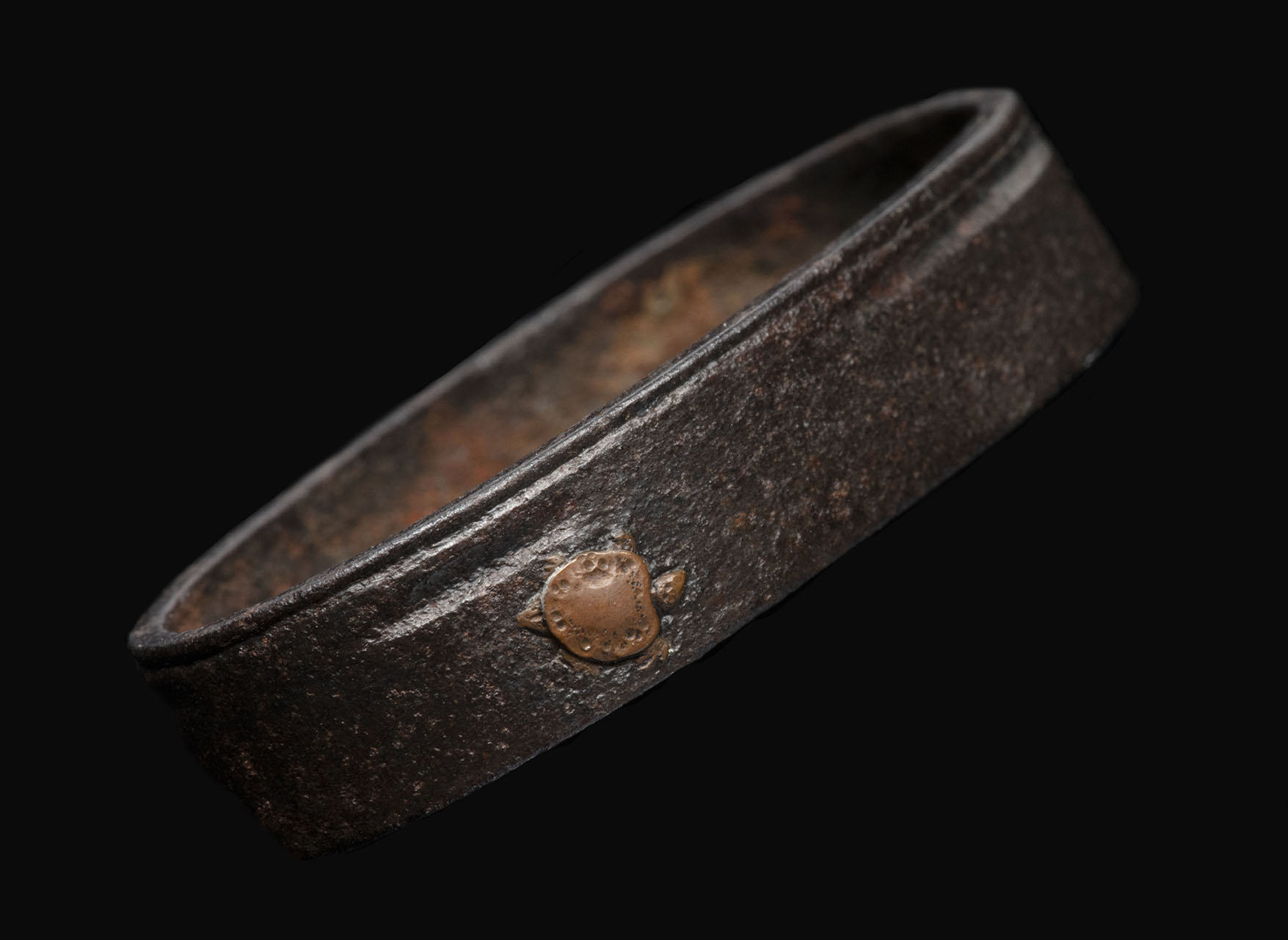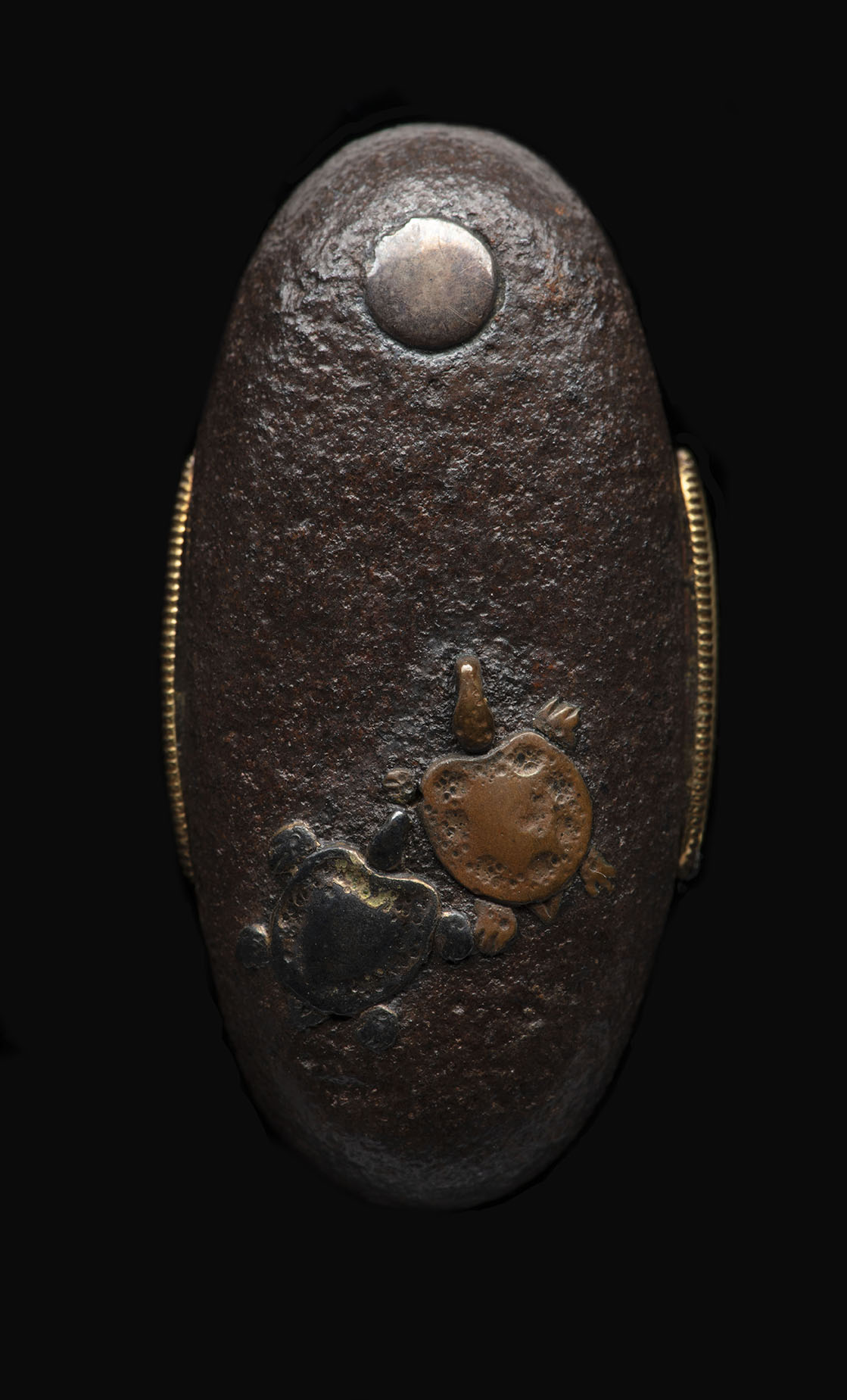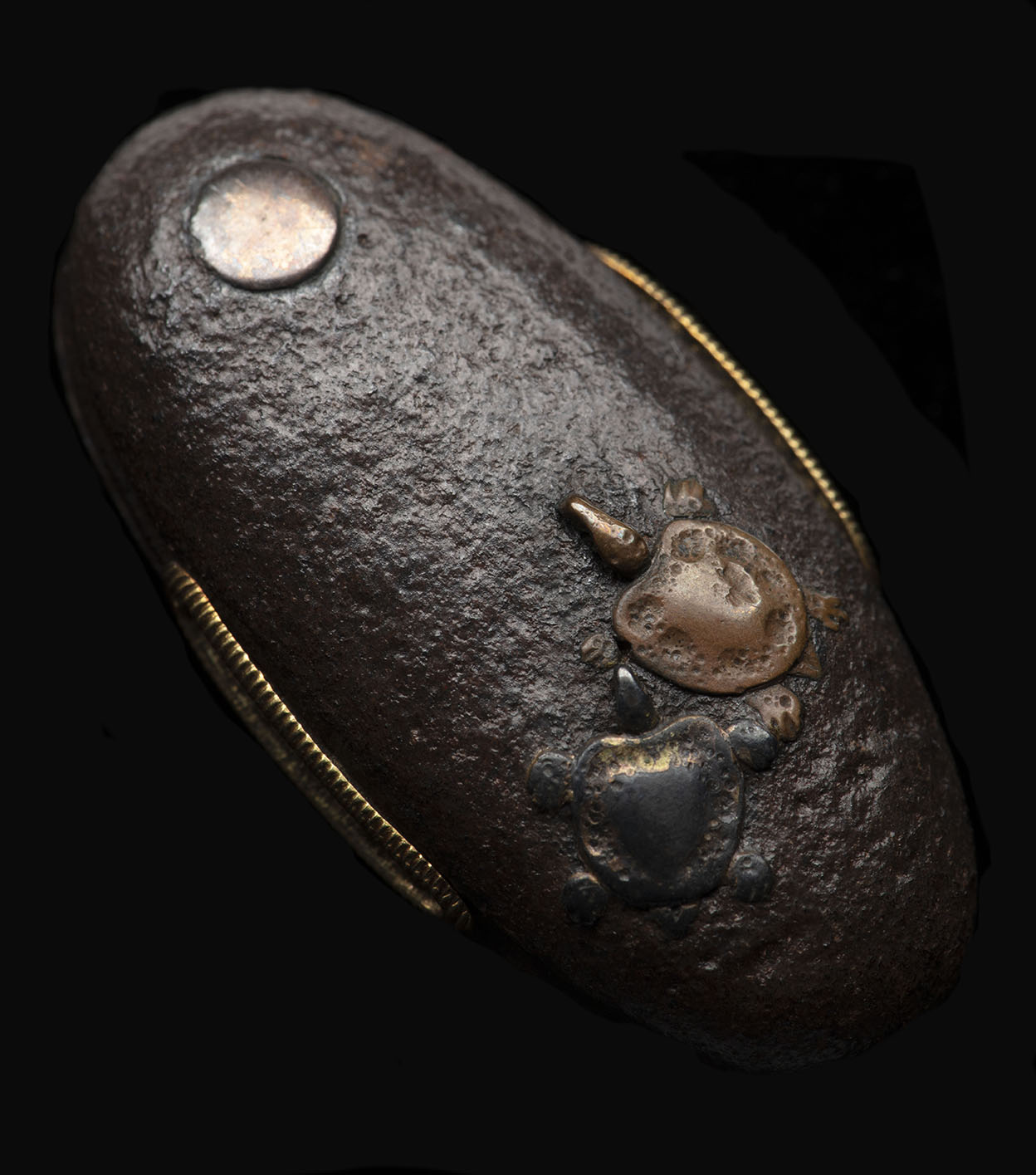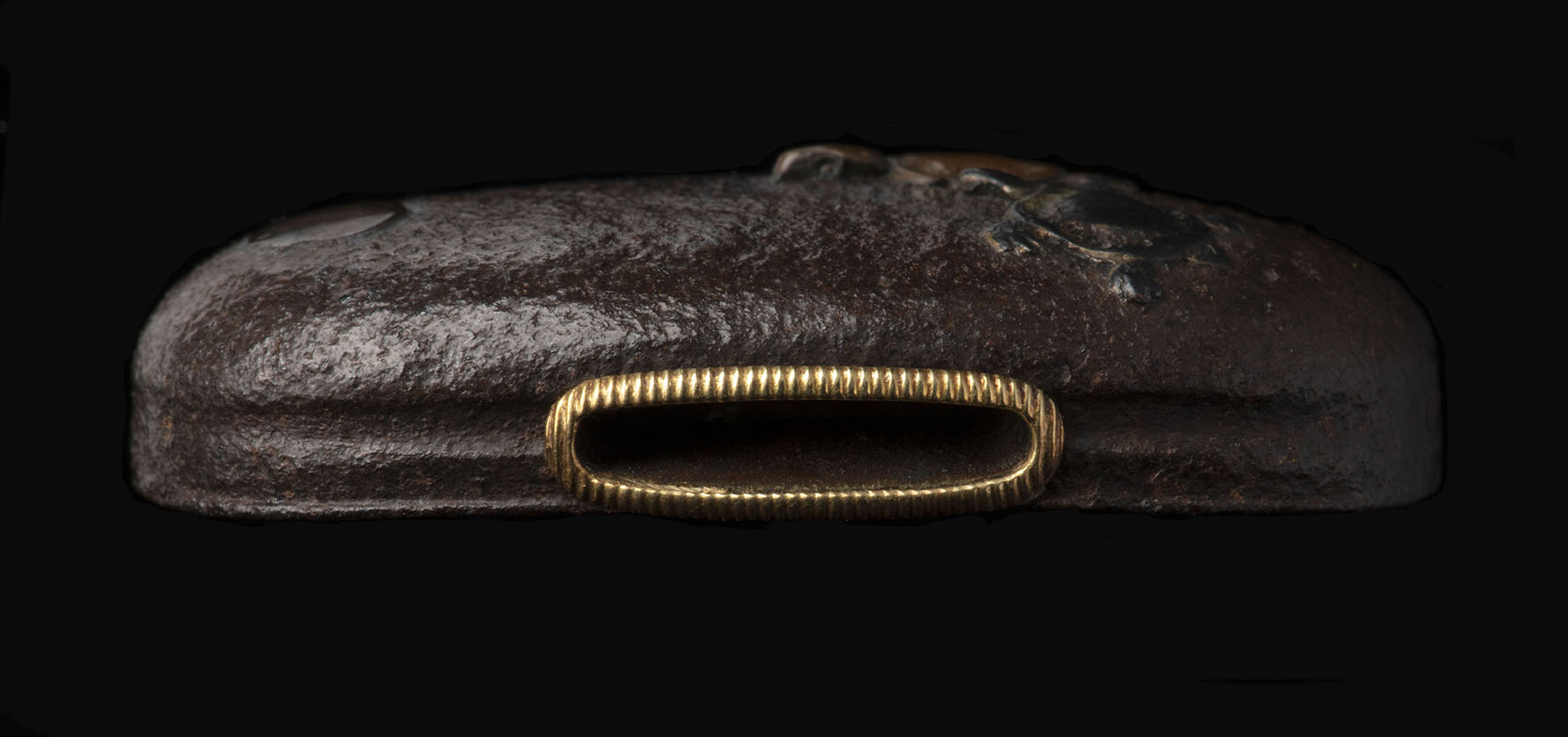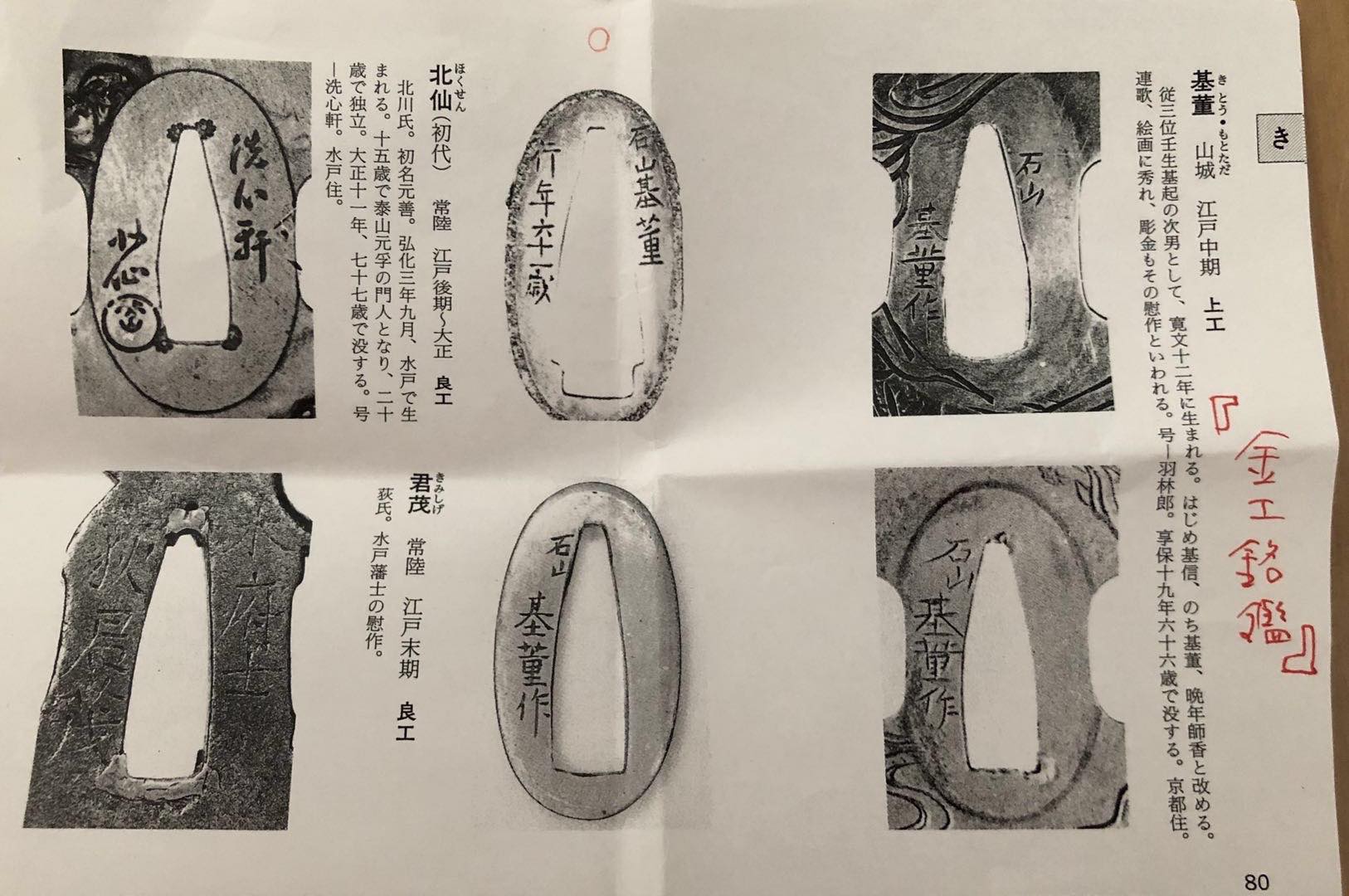Fuchi Kashira Set by Ishiyama Mototada
Ishiyama Mototada was born into the noble Mibu family in 1669. The Mibu family held a family court name of Urin. His father was Mibu Motooki whom held a third court rank. Mototada’s given name was Moroka, and he was listed as holding a second court rank. Mototada was also the founder of the Ishiyama branch, a painter, lacquer artist, calligrapher, and poet. His training in fittings craft was likely within the Goto family. He died in 1734 at the age of 66.
Extant works by Mototada vary in materials, themes, and techniques, which would seem natural as a person of varied interests and talents. There are tsuba in copper and shakudo carved with floral and insect motifs, and other fuchigashira in shakudo and gold with nanako that point strongly to Goto influences.
The design and composition of this set would seem a departure from his other extant works, and moving toward the wabi sabi aesthetic that was popular in Mototada’s time and would have been ubiquitous in the surrounding arts he took part in. Of particular interest is the incorporation of the turtles. Turtles are relatively common in Japanese arts as they were firmly embraced from Chinese mythology as representatives of longevity, fortune, protection, the direction of North, unification of heavy and earth, and more. However the tortoise (or turtle) most often seen in Japanese arts is the “Minogame” which is a hardshell turtle old enough that the moss has collected on the back and trailing edge of its shell so that it fans out and streams behind it while swimming. However, a close look at the tortoises on this set of fuchigashira clearly shows that they are soft shell turtles (Trionychidae) having elongated snouts, flatter and smoother shells with a dished rim, and three clawed toes on each foot. I have never seen another set of fittings with this type of turtle chosen for the subject.
They are shown looking and moving toward a full moon, on both the fuchi and the kashira, and the ura of the fuchi we find a smaller baby turtle. It is a charming set of fuchigashira that brought a warm smile to my face the first time I held it. The iron base has a lovely natural texture brought out by Mototada’s work and enhanced by 290 years of age. The turtles are sculpted in copper and shakudo with washes of gold and other alloys that accentuate details but have also worn away over years of handling the continue to add to the nature and desire of wabi sabi design that only time can create. There also is a groove that is carved below the rims of the fuchi and kashira that softly disappears adding to the “impermanence of time” effect. The kashira holds two matching and well-made gold rimmed shitodome.
- Fuchi measures: 37.5 mm x 20.5 mm x 7.5 mm
- Kashira measure: 34.0 mm x 17.0 mm x 8.0 mm
The mei on the fuchi reads “Ishiyama Mototada did this at the age of 61”, so that dates the set to about 1729, and near the end of his life.
This fuchi is illustrated in the Shinsen Kinko Meikan as a reference example. The set was submitted to shinsa in 2019, and received a response of “Horyu”, which essentially means there were enough anomalies in the mei that it could not be immediately declared authentic, but is also consistent enough that it cannot be denied as genuine. The short tongue-in-cheek answer for what Horyu means is “submit it again in the future”. I am pricing this set in what I feel is a mid-range between genuine and gimei, and supported by my own feelings of it’s quality, and highly unique character. It should be submitted to shinsa again in the future, and I am happy to discuss terms with a buyer with regards to sharing in the results by way of a partial refund or bonus structure based on the outcome.
A highly unusual, very desirable, and uncommonly collectable set held in a high-quality custom fitted box.
